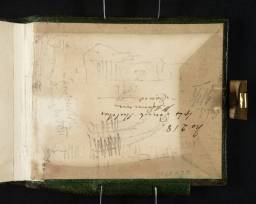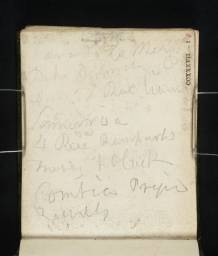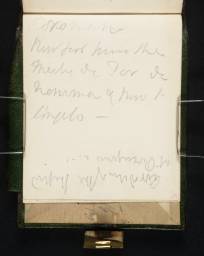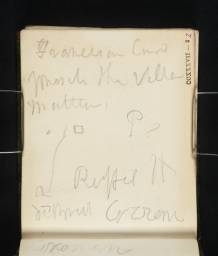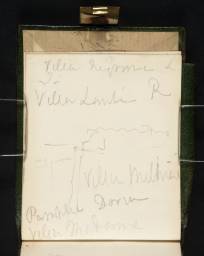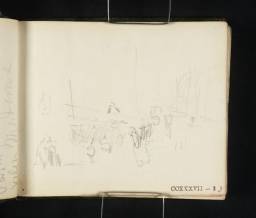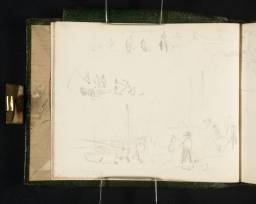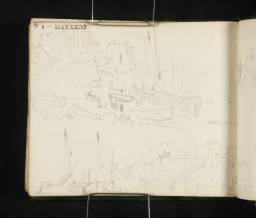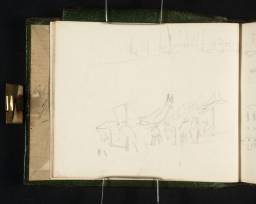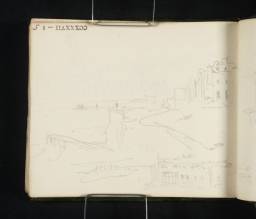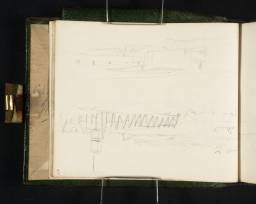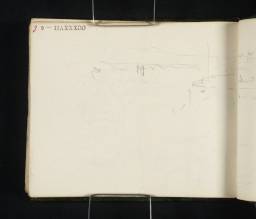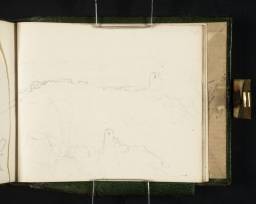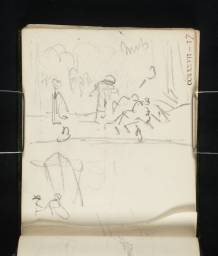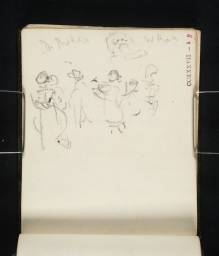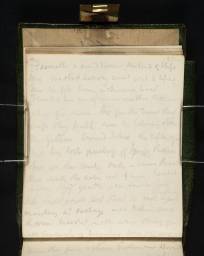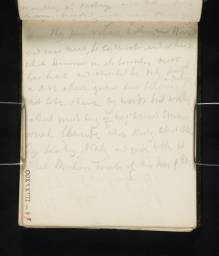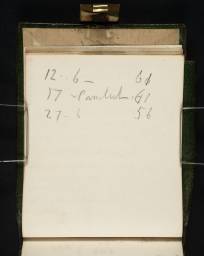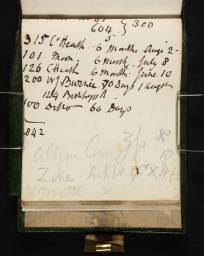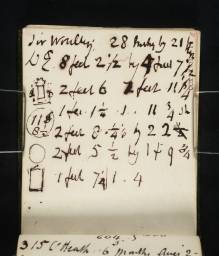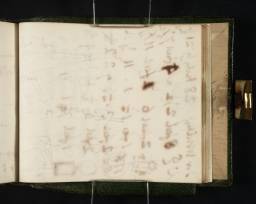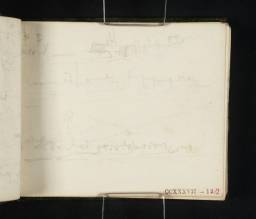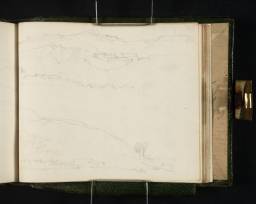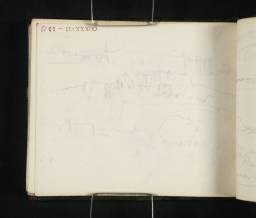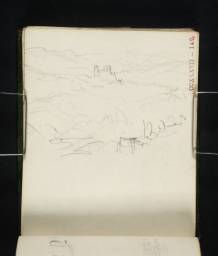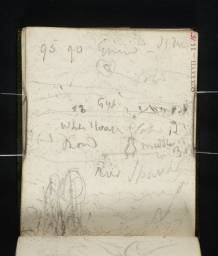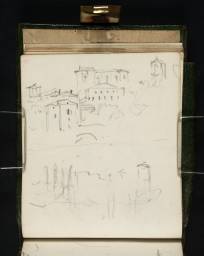Turner Bequest CCXXXVII 1–66a
Sketchbook bound in boards covered in dark green leather with blind-tooled borders front and back; one brass clasp
68 leaves and paste-downs of white wove paper, with apparently later free endpapers front and back; page size 71 x 88 mm
Numbered 218 as part of the Turner Schedule in 1854 and endorsed by the Executors of the Turner Bequest inside front cover (D41238)
Blind-stamped with Turner Bequest monogram on front cover, top left
68 leaves and paste-downs of white wove paper, with apparently later free endpapers front and back; page size 71 x 88 mm
Numbered 218 as part of the Turner Schedule in 1854 and endorsed by the Executors of the Turner Bequest inside front cover (D41238)
Blind-stamped with Turner Bequest monogram on front cover, top left
Accepted by the nation as part of the Turner Bequest 1856
Exhibition history
References
Turner used this sketchbook during his second major tour of France and Italy in 1828–9, as one of eight associated with this journey (see the overall tour Introduction). It is an anomaly among the eight books: rather than following a chronological sequence like the remaining seven, it instead features a seemingly haphazard assortment of sketches and inscriptions representing a range of locations in Britain, France and Italy. The sheer number of inscriptions (around a sixth of the overall contents) likely accounts for it being referred to by Finberg in his 1909 Inventory of the Turner Bequest as a ‘note book’ and ‘pocket book’ rather than a ‘sketchbook’.1
Turner evidently acquired this book in Britain, prior to his departure for France and Italy, as it contains views of locations including Shoreham (see folios 5 verso, 6 recto and 62 verso–66 verso; D21861, D21862, D21964–D21972), Brighton (3 verso–5 verso and 61 recto–62 recto (D21857–D21860, D21961–D21963), Petworth (for a full list, see folio 56 verso; D21952), and possibly Dover (for example, folio 11 verso; D21872). Precisely when Turner visited these locations prior to his Italian tour remains unclear.
Another feature distinguishing this book from the others associated with the 1828–9 tour is the comparatively high number of figurative studies. Over a dozen works feature quotidian scenes of human and animal subjects, from priests (see, for example, folio 44 recto; D21929), French peasants (folio 53 verso; D21946) and fellow travellers (folio 55 recto; D21949) to horses (folio 47 recto; D21935) and donkeys (folio 53 verso; D21946).
Regarding French and Italian subjects, the views of Rome, Pisa and Genoa are slight when compared alongside the more substantial surveys Turner produced in the Genoa and Florence and Rome to Rimini sketchbooks of the same tour (Tate; Turner Bequest CCXXXIII, CLXXVIII). Other locations are not represented in the other sketchbooks and make their sole appearance here, such as the town of L’Arbresle in France, a subject recently identified by the geographer and Turner researcher Roland Courtot.2 Among the more significant sections is a grouping of a dozen views of Tivoli, near Rome, providing the only visual evidence the artist visited this town in the winter of 1828, as it does not feature in the other sketchbooks (for a list of views of Tivoli, see folio 30 recto; D21901).
Roland Courtot, ‘17. Un carnet de notes de Turner pendant le voyage de 1828–1829’, Carnets de voyage de Turner, accessed 27 November 2024, https://carnetswt.hypotheses.org/4440 .
Technical notes
How to cite
Hannah Kaspar, ‘Roman and French Sketchbook 1828–9’, sketchbook, December 2024, in David Blayney Brown (ed.), J.M.W. Turner: Sketchbooks, Drawings and Watercolours, Tate Research Publication, February 2025, https://www

